On May 20th, Plenary Session IV titled " International Trade: Challenges and Opportunities" was held. The session was chaired by Ju Jiandong, Chair and Director of the International Finance and Economics Research Center, Tsinghua PBCSF, and joined by distinguished guests including Zhang Xiangchen, Deputy Director-General of the World Trade Organization (WTO); Zhang Yansheng, Chief Researcher of the China Center for International Economic Exchanges; Tu Xinquan, Dean and Professor of the China Institute for WTO Studies at the University of International Business and Economics; and Xu Qiyuan, Deputy Director and Researcher of the Institute of World Economics and Politics at the Chinese Academy of Social Sciences.
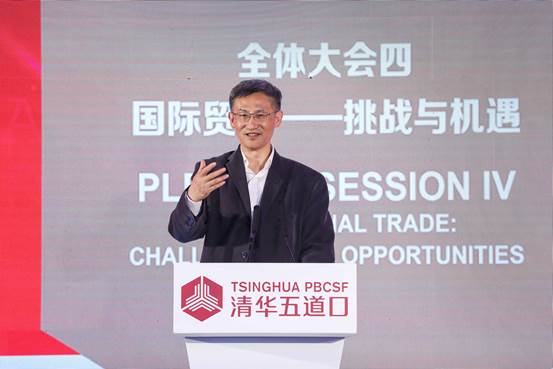
JU Jiandong
Zhang Xiangchen, Deputy Director-General of the WTO, believes that future international trade will be characterized by digitization, sustainability, and inclusiveness. Firstly, the digital economy will dominate the future of trade. Digitization has already transformed the traditional trade of goods and services, creating new products and transaction methods and increasing the share of services in international trade. This requires reforms in the way we estimate traditional trade. Additionally, the digital economy has the potential to significantly reduce trade costs and entry barriers, making it inclusive. However, it also faces risks of monopolies and data protection issues. Digitization has also extended global value chains and changed global production patterns. Digital technologies have increased the importance of four elements: digital infrastructure, market size, market management systems, and intellectual property rights. The aforementioned impacts of the digital economy make international policy coordination and new trade rules more important. The rapid flow of data necessitates the establishment of global rules that coordinate policies on data flow, storage, protection, cybersecurity, and national security, while considering the needs of technological progress, market integration, and respect for each country's governance objectives.
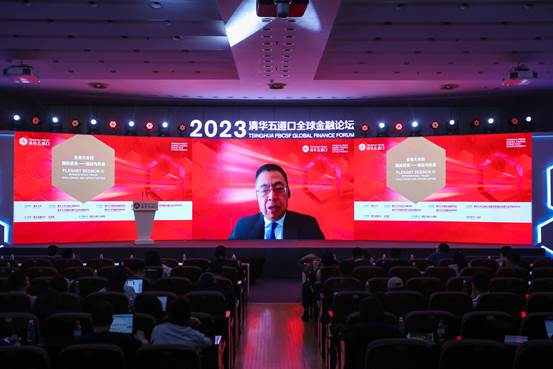
ZHANG Xiangchen
Zhang Xiangchen also emphasized the increasing importance of environmental issues in trade. He identified five characteristics of the global trade landscape: 1. efficiency is no longer the main consideration, and the significance of security has risen; 2. multinational companies are accelerating their diversification and strengthening the resilience of supply chains; 3. partial decoupling is accelerating, which may lead to a global GDP loss of 1.5% to 5%; 4. competition in emerging areas, such as electric vehicles, is intensifying; 5. the divergence among developing countries is deepening. The structural problems primarily include insufficient leadership, as the United States currently lacks strong leadership in the WTO due to domestic political reasons. Another issue is cohesion. Most WTO members are developing countries that have not fully experienced the benefits of integration into the multilateral trading system, and they have many concerns about participating in the formulation of new rules.
Regarding these new characteristics of the global trade landscape, the fundamental change in the global trade landscape has not yet occurred, the trend of trade liberalization will not change, and multilateral trade rules have played a role and demonstrated resilience. Reform of the WTO is imperative but requires time and joint efforts from all countries. It also needs to be achieved in a condition of eased global tensions.
Zhang Yansheng, Chief Researcher of the China Center for International Economic Exchanges, pointed out that in regional trade, the competition and game between the Regional Comprehensive Economic Partnership (RCEP) and the Indo-Pacific Economic Framework for Prosperity (IPEF) is essentially a competition between regional free trade and value-based trade. The IPEF focuses on trade centered around values, with four pillars at its core, promoting value-based trade, while RCEP promotes the construction of a free trade area. The competition involves both geopolitical influences and economic and trade interests. Currently, China is undergoing a trade transformation, with general trade, private enterprises' imports and exports, and exports of mechanical and electrical products accounting for a significant proportion. China's top five trading partners are ASEAN, the European Union, the United States, South Korea, and Japan. In the future, the international trade environment will undergo changes, and a trend has emerged from offshore manufacturing, onshore manufacturing, global manufacturing to nearshore manufacturing and friend-shoring manufacturing. In the new circumstances, it is important to consider how to maintain connections without decoupling and achieve cooperation without confrontation. With the global economic center shifting to the East, China should further promote modernization that ensures shared prosperity for all the people, harmonious coexistence between humans and nature, and a path of peaceful development. For China, the current trade environment is both an opportunity and a challenge.
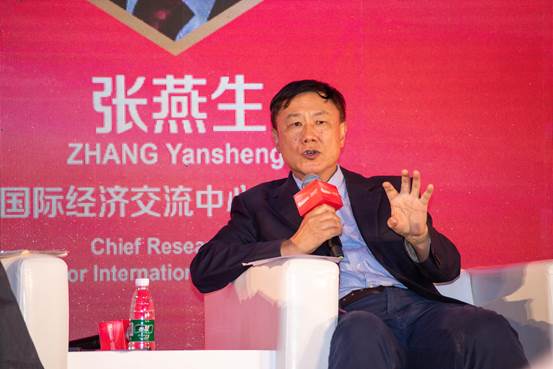
ZHANG Yansheng
Tu Xinquan, Dean of the China Institute for WTO Studies at the University of International Business and Economics, believes that since the establishment of diplomatic relations between China and the United States, China has long been seen as a cooperative partner of the United States, with some room for reconciliation in their political systems. However, since 2008, the relative decline of U.S. leadership and China's rapid rise have posed challenges to the U.S. international status. The multilateral trading system was established under U.S. leadership after World War II, with the basic premise that the United States could provide security consensus. However, due to the changing U.S. perception of China's security, the security consensus of the multilateral trading system is declining, and the U.S.-China trade conflict has become part of major power competition. In terms of imports, the United States has adopted import restriction measures since 2008, breaking with the past traditions. In terms of exports, the United States extensively uses export controls to restrict China's technological progress, particularly focusing on military and dual-use technologies. The U.S. arbitrary expansion of the scope of national security violates WTO principles.
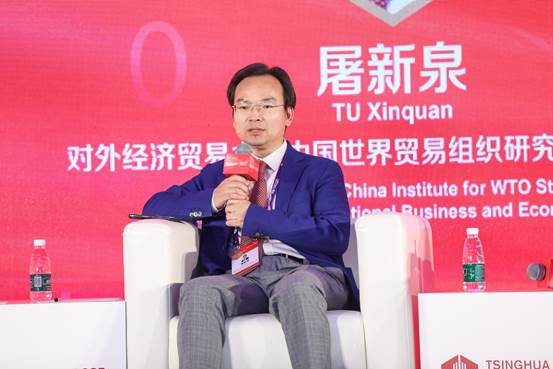
TU Xinquan
Xu Qiyuan, Deputy Director of the Institute of World Economics and Politics at the Chinese Academy of Social Sciences, pointed out the various stages of globalization: 1. the global flow of final goods; 2. cross-border capital flows and cross-border production; 3. the cross-border flow of information and data.
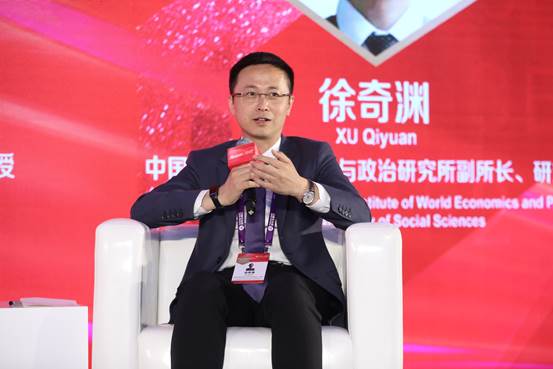
XU Qiyuan
In the first stage, security boundaries are relatively clear; in the second stage, the WTO can also play a role, and bilateral trade mechanisms can solve some problems; however, in the third stage, WTO reform is incomplete, new problems arise, security boundaries become less clear, and security concerns increase. Technologically, no solution has been found at present.